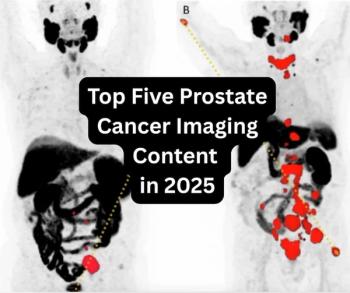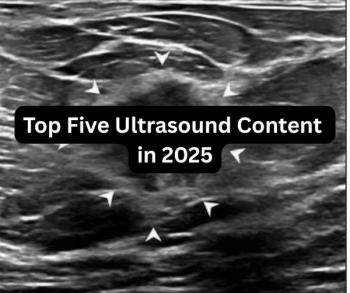
Ultrasound manufacturers eye future with caution
The market for ultrasound scanners in the U.S. rose sharply last year. Vendors are interpreting sales numbers carefully, however, as they are not sure how long the good news will last.In 2000, revenue reached nearly $828 million in the U.S. on the sale
The market for ultrasound scanners in the U.S. rose sharply last year. Vendors are interpreting sales numbers carefully, however, as they are not sure how long the good news will last.
In 2000, revenue reached nearly $828 million in the U.S. on the sale of 9568 ultrasound scanners, a jump of 37% over the 6969 systems valued at $724 million sold in 1999, according to statistics gathered by the National Electrical Manufacturers Association (NEMA).
New system shipments increased for general radiology, cardiology, and ob/gyn, although valuation declined for cardiology. The value of all shipments, including used equipment and upgrades, dropped 1% to about $876 million.
“We know the average selling prices have come down,” said Kim Dahlman, director of business intelligence for ATL Ultrasound. “The ultrasound market is growing in units but not to the same extent in dollars.”
Eyeing the future with caution is Edith Stone, director of sales and marketing for Shimadzu Medical Systems. The company, which specializes in providing value-oriented technology, claims to be among the top three manufacturers in both private-practice obstetrics and private-practice urology.
“The industry did a little better in the second half (of the year) - the first half was a little slow and scary,” Stone said.
The future may be a problem, as well, Stone said. Colleagues outside Shimadzu have told her times are getting tougher. With the current economic downturn showing no signs of reversing, she views the future with some uncertainty.
“We were up a little bit last year, I would say about 5%,” Stone said. “We’ve been pretty much on forecast this year, but we’re all holding our breath with the economy the way it is.”
ATL’s Dahlman described industry sales as moderate rather than brisk, in part due to the pending acquisition of Agilent Technologies by Philips Medical Systems, which also owns ATL. Buyers appear to be postponing sales until the alignment clarifies, she said. Even so, general imaging sales for ATL are above forecast, while the company is holding its own in cardiology.
“I anticipate that once the (Agilent) deal closes, a lot of the hesitation in the marketplace will clear up,” Dahlman said.
In addition to the pending merger between Agilent and Philips, Acuson and Siemens are in the process of combining their organizations. Consolidation has changed the character of the industry, raising opportunities for some vendors and making others vulnerable.
Several vendors urged caution when interpreting NEMA numbers, but there was general agreement that NEMA estimates provide one of the best gauges of overall market activity. Trends in the cardiology segment were borne out by qualitative interpretations by industry sources.
NEMA estimates indicate that the number of echocardiography systems shipped last year was slightly higher than in the year before, rising from 2122 to 2262. Revenue, however, declined from $287 million to $261 million.
The drop was due to increased competition, said Greg Petras, general manager of Agilent’s imaging division. Feeling the pressure, vendors cut prices on flagship products. Reducing revenue further was a growing interest in less expensive systems for applications that traditionally have required more sophisticated and costly systems, Petras said.
The market for systems costing more than $125,000 was down about 20% in 2000 and the market for those ranging from $100,000 to $125,000 was down 11%, according to Petras, who also is a NEMA board member. By comparison, the market for systems ranging from $40,000 to about $80,000 was up, he said. Toshiba America Medical Systems expects price drops to continue through 2001.
“At the same time, we anticipate ultrasound system features to increase,” said Victoria Grinned, product manager for ultrasound. “Systems will be richer, yet average selling prices will decrease.”
Newsletter
Stay at the forefront of radiology with the Diagnostic Imaging newsletter, delivering the latest news, clinical insights, and imaging advancements for today’s radiologists.




























